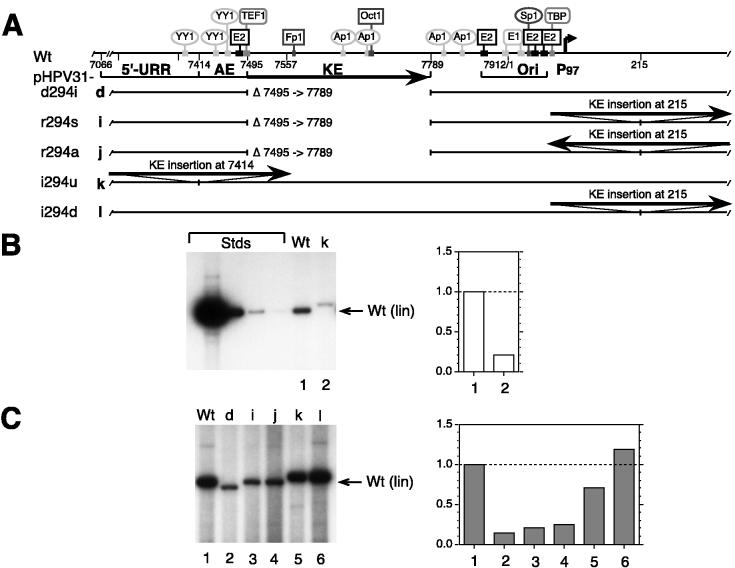FIG. 3.
Transient DNA replication of HPV31 mutants with deletions, rearrangements, or insertions of the KE. (A) The schematic elements of the HPV31 URR are the same as described in the legend to Fig. 1. In addition, KE elements inserted into the viral DNA at given nucleotide positions are shown as solid lines with arrow tips, indicating the normal KE orientation (described in Materials and Methods). Deletion (d), rearrangement (r), or insertion (i) mutants of HPV31 where the 294-bp KE fragment is deleted or placed in sense (s) or antisense (a) orientation, upstream (u) or downstream (d) of the origin: d, pHPV31-d294i (Δ7495 to 7789); i, pHPV31-r294s (Δ7495 to 7789, KE at nt 215 in sense); j, pHPV31-r294a (Δ7495 to 7789, KE at nt 215 in antisense); k, pHPV31-i294u (new KE at nt 7414); l pHPV31-i294d (new KE at nt 215). (B) Autoradiogram of representative Southern blot of replicated (DpnI-resistant) viral DNAs from a transient replication assay with HPV31 wt and mutants in SCC13 cells (50% of total sample analyzed for each). Viral wt and mutant k DNAs (equimolar amounts based on 3 μg of 7,912-bp wt HPV31) were transfected without expression vectors. (C) Autoradiogram and graph from cotransfections of viral DNAs with equimolar amounts of E1 and E2 expression vectors. DNA standards (Stds), migration of viral DNA, and quantification of the relative replication levels (B and C) are described for Fig. 1B.

